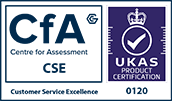Peggy Smith Drawings
Archive reference: Cwl PEG
Peggy Smith
Born in 1895, Peggy Smith devoted her life to campaigning for peace. During the 1920s she gave up art school for a secretarial post in the League of Nations Union London Federation. Her poor health (she had spinal tuberculosis as a child) made this work impossible. She found more suitable work in 1929 when, impressed with a doodle she made at a meeting, Fenner Brockway asked her to draw regularly for the journal of the Independent Labour Party, “The New Leader”, of which he was then editor.
During the 1930s, Peggy was a freelance artist. This article in our 100 Objects exhibition highlights her works: “I drew anybody who came to London to talk to the government or to speak”.
In 1936, she was one of the first women to sign the Peace Pledge. She knew (and drew) many of the Peace Pledge Union’s sponsors, being particularly influenced by Gerald Heard. Peggy produced sketches for Peace News, founded in 1936, and supported the paper for the rest of her life, in later years selling copies on the steps of St Martin-in-the-Fields. From this grew her involvement with the London School of Nonviolence, which met in the Crypt of St. Martin’s. She joined the Campaign for Nuclear Disarmament in the 1950s, was arrested 11 times for her involvement in Committee of 100 actions, and in 1968 travelled to Cambodia as part of a non-violent action group to draw attention to the American bombing of North Vietnam.
In 1973, Peggy showed her 1930s drawings to friends who recognised their artistic and historical value. Thanks to their efforts, in 1975, she held her first exhibition: “Music and Line” showed her 1930s drawings of musicians, in the highly appropriate setting of the Royal Festival Hall. Peggy Smith died on 12 February 1976. A farewell concert was held at the Hampstead Friends Meeting House, which she had attended for many years.
The Drawings
Peggy Smith's drawings came to Bradford thanks to Margaret Glover, an artist who studied images of peace, and was intrigued by Peggy’s work in early issues of Peace News. Thanks to her involvement, the drawings were deposited with Commonweal Library, and are cared for by Special Collections.
The drawings show individuals active for peace in the 1930s, including Norman Angell, Vera Brittain, Laurence Housman, Fridtjof Nansen, Philip Noel-Baker, Maude Royden, Dick Sheppard, Philip Snowden, Donald Soper, Wilfred Wellock, and Gandhi. There are British politicians: Stafford Cripps, Fred Jowett, Ellen Wilkinson, musicians including Sir William Rothenstein, writers and church leaders.


